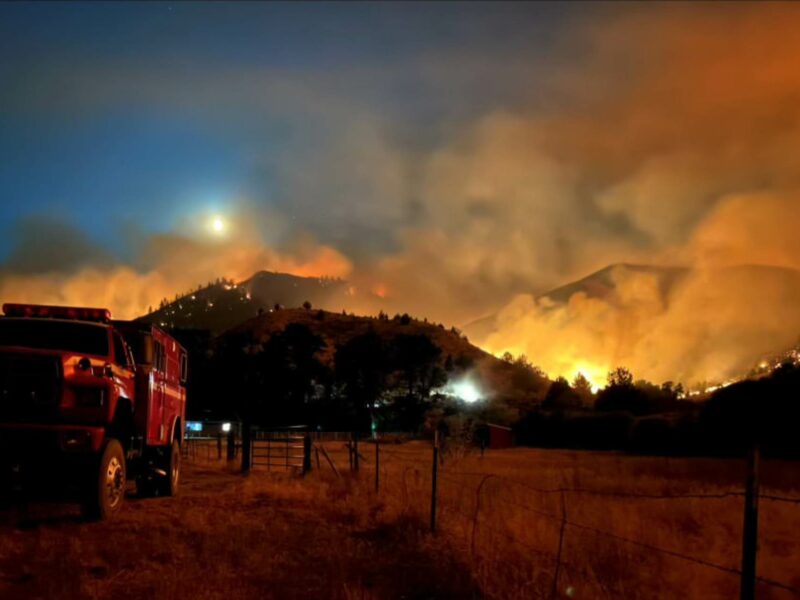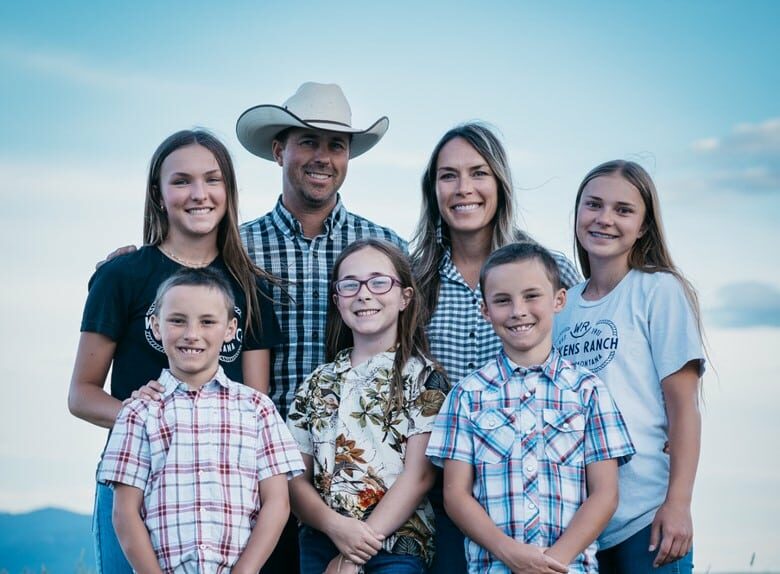What landowners need to know about process-based restoration
Jackie Corday, owner of Corday Natural Resources Consulting and tri-chair of the Colorado Healthy Headwaters Working Group, joined the Western Landowners Alliance for a presentation about the key considerations for landowners and water rights holders as they evaluate and implement PBR (process-based restoration) techniques on their lands. Kenyon Fields of Mountain Island Ranch (MIR), a founding member of the Western Landowners Alliance, also presented his experiences implementing restoration projects on MIR. The webinar event (watch a recording above) was the first in WLA’s new Winter Water Webinar series.
A High-Level Overview
Corday began with a fundamental introduction to LTPBR (low-tech process-based restoration) as a restoration tool designed to reconnect small incised streams to their floodplain by various hand-built structures made of natural materials. Examples of these methods include the use of rock detention structures, BDAs (beaver dam analogs), PALS (post-assisted log structures), and large woody debris to restore floodplain reconnection on intermittent and perennial streams. Similarly, Zeedyk rock structures, wicker weirs, and grazing management plans are tools more commonly associated with projects designed to stabilize erosional head cuts in ephemeral streams and wet meadows.
Potential Benefits for Landowners, Livestock, and Wildlife
Several slides were dedicated to outlining the potential benefits that landowners could experience from engaging in stream restoration using LTPBR methods. These include the potential for increased resilience to wildfire and drought, improved water quality, improved habitat, and improved availability of water and forage.
Corday emphasized the interconnectedness of PBR and sustainable livestock grazing. Studies show that managing grazing practices to protect riparian corridors over several years led to significant recovery, aligning with PBR principles of addressing root causes of degradation and removing stressors for vegetation recovery.
Additionally, the presentation underscored how investing in upland habitat treatments through PBR methods could mitigate wildfire risk and positively impact stream health.
Colorado’s Restoration Legislation
Corday also touched on Colorado’s Senate Bill 23-270, which allows for select minor stream restoration activities to occur without being subject to water rights administration. The six specific activities covered under the bill include opportunities for both pre- and post-wildfire mitigation using PBR methods, and opportunities to improve drought resilience throughout Colorado’s watersheds. For more information about this legislation, consider attending a SB23-270 training, hosted by Colorado Healthy Headwaters Working Group.
Effective Planning, Reducing Risk, Increasing Success
Finally, Corday addressed potential concerns about water rights and highlighted some best management practices for ensuring no harm is caused to other water users. While she noted that there are no documented cases of harm to water rights resulting from the increased evapotranspiration from increased riparian vegetation and surface water area post-LTPBR projects, project proponents must be sensitive to these concerns throughout the planning, design, implementation, and monitoring phases of the work.
To mitigate potential water rights concerns, the presentation recommended starting with low-risk project types, including wet meadow gully erosion work and small streams far from diversion structures. Other considerations should include coexistence measures for beavers, employing beaver mimicry-type structures that allow for fish passage, and designing projects that stay within the parameters of the historical footprint test.
Successful restoration work also includes the post-project considerations of adaptive management, ongoing monitoring, and assisting landowners with continuing challenges like beaver coexistence.
Case Study: Mountain Island Ranch
Fields then discussed his restoration work along the Little Dolores River, which flows through Mountain Island Ranch. The incised river channel, now ephemeral due to drought, had disconnected from its floodplain and become overrun by invasive Russian olive. MIR’s restoration efforts have included the aggressive removal of Russian olives and the installation of more than 200 PALS. The ranch has also worked to restore its wet meadows by combining Zeedyk rock structures with PALS, effectively re-saturating the ground year-round.
Fields had two major lessons learned to share from their work: first, “Just get started,” he said. When they began restoring the stream they didn’t have partners or support or much funding, but as word spread that they were willing to do something, people started asking them how they could help. Volunteers, funding opportunities, and partnerships, including with the neighboring federal landowner, followed. Second, concentrate your efforts on a small reach of stream at first. “If you have enough money or time to put 10 structures along 1 mile of stream, put them all within 100 yards of each other,” Fields said. Especially in Southwestern streams prone to flash flooding, concentrating structures will help prevent them all from blowing out during a flood event.
Q+A’s
Participants raised questions about Clean Water Act permitting for perennial and intermittent water bodies in Colorado, highlighting the necessity of obtaining a 404 permit in such cases. Addressing concerns over water rights, the recommendation was to prioritize PALS over BDAs. For landowners concerned about liability while undertaking a project’s construction, the suggestion was to engage a nonprofit for volunteer work on private lands. Regarding evapotranspiration, there is limited science available on the subject, but more research is underway – more information on this topic can be found in the American Rivers report.




